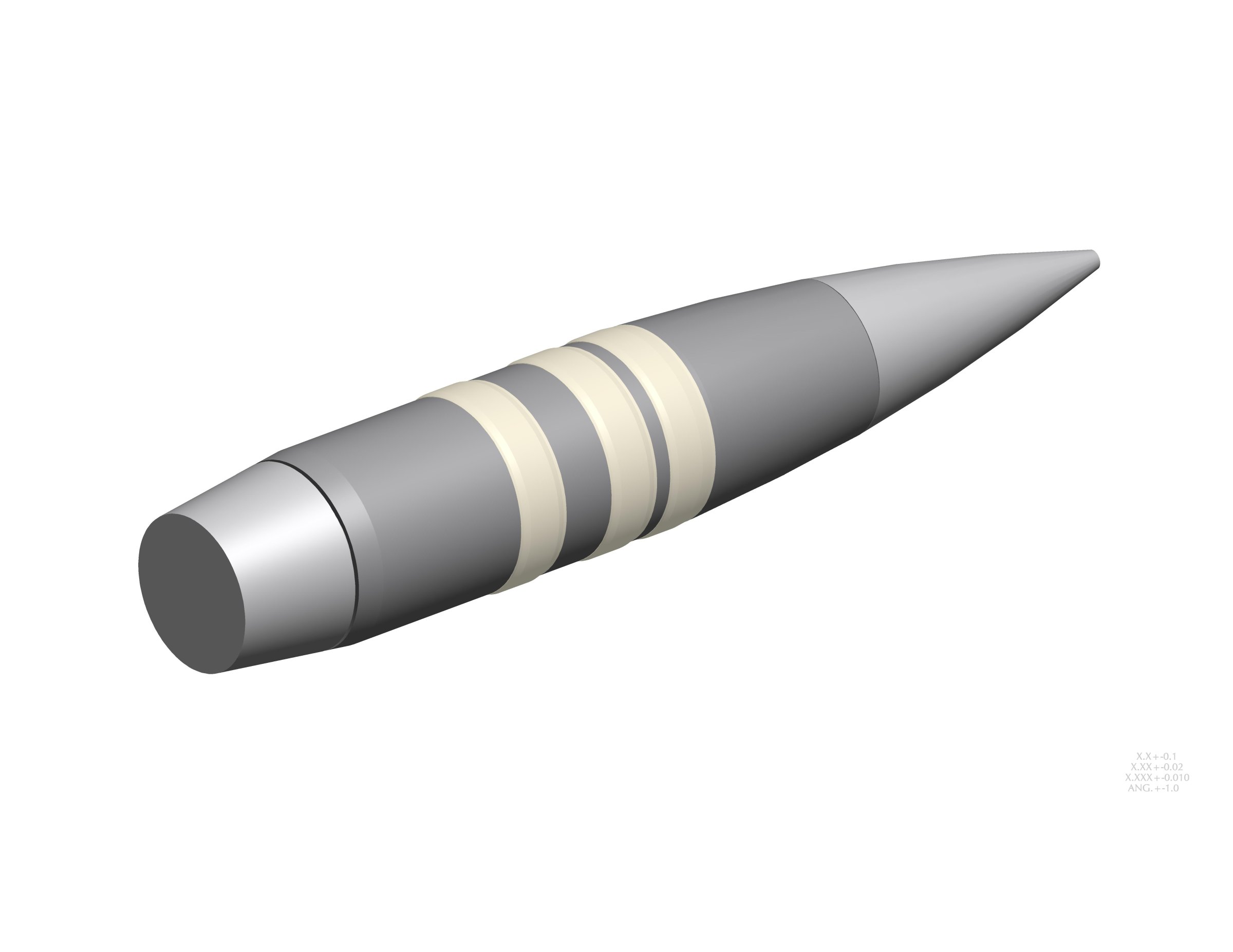
Accuracy trumps terror every time. For good or for ill, that is why Israeli missiles have killed at least 160 Palestinians, while Palestinian rockets have killed zero Israelis. While killing innocents as well as terrorists, the Israeli strikes are precise. So is its Iron Dome anti-missile system, which appears to be doing a pretty good job destroying Palestinian rockets headed for Israeli population centers. Meanwhile, the Palestinians are left to launch unguided rockets, hoping to get lucky and kill Israelis.
Along the same lines, imagine if you could transform a dumb bullet into a guided missile?
That’s what the Pentagon did earlier this year, successfully firing .50-caliber bullets that steered themselves in mid-flight. It has just released a video trumpeting the tip-top targeting of its Extreme Accuracy Tasked Ordnance (EXACTO) program.
“This video shows EXACTO rounds maneuvering in flight to hit targets that are offset from where the sniper rifle is aimed,” the Pentagon’s Defense Advanced Research Projects Agency says. “EXACTO’s specially designed ammunition and real-time optical guidance system help track and direct projectiles to their targets by compensating for weather, wind, target movement and other factors that could impede successful hits.”
The Pentagon wants the capability for its snipers, making their goal of “one shot, one kill” even more likely. The April 21 test by DARPA contractor Teledyne Scientific & Imaging shows the new bullet homing in on its target by riding a laser beam aimed by the sniper team at the desired target. Vanes on its body—and an onboard optical receiver—allow it to maneuver in mid-flight.
The highly-classified EXACTO program began six years ago. “The ability to more accurately prosecute targets at significantly longer range would provide a dramatic new capability to the U.S. military,” DARPA’S original program description said. “The use of an actively controlled bullet will make it possible to counter environmental effects such as crosswinds and air density, and prosecute both stationary and moving targets while enhancing shooter covertness.”
Such a weapon, DARPA said when it launched the program, could employ “fire and forget” technologies including “fin-stabilized projectiles, spin-stabilized projectiles, internal and/or external aero-actuation control methods, projectile guidance technologies, tamper proofing, small stable power supplies, and advanced sighting, optical resolution and clarity technologies.”
The Pentagon wants the new gun to be no heavier than the combined 46-lb. weight of the current $11,500 M107 sniper rifle and all its associated gear (including ammo, tripod, scope and slide rules for target calculations).
Military sharpshooters require extensive and expensive training—all of which could be reduced with a better gun. Snipers “are unable to take a shot the vast majority of the time” because of wind or other weather factors, and a lack of confidence in their ability to hit the target or flee if detected, DARPA has said.
Then-Army Captain Keith Bell, former commander of the Army sniper school at Fort Benning, Ga., told TIME five years ago that he couldn’t wait to get his hands on the new bullet. “The EXACTO would be revolutionary,” he said from Mosul, Iraq. “It will more than double our range and probably more than double our accuracy.”
Current sniper rifles can regularly hit trucks at 2,000 meters, but not bad guys. (The record kill is 2,430 meters, just over 1.5 miles. It was charted by Canadian army corporal Rob Furlong against a Taliban fighter in Afghanistan’s Shah-i-kot valley during Operation Anaconda in March 2002—but his first two shots missed.) “There’s no limit as far as I can see so long as the bullet’s stable—I think 2,000 or 2,500 meters is very attainable,” Bell said. “Right now, anything past around 800 meters is an extremely tough shot.”
More Must-Reads From TIME
- The 100 Most Influential People of 2024
- How Far Trump Would Go
- Scenes From Pro-Palestinian Encampments Across U.S. Universities
- Saving Seconds Is Better Than Hours
- Why Your Breakfast Should Start with a Vegetable
- 6 Compliments That Land Every Time
- Welcome to the Golden Age of Ryan Gosling
- Want Weekly Recs on What to Watch, Read, and More? Sign Up for Worth Your Time
Contact us at letters@time.com